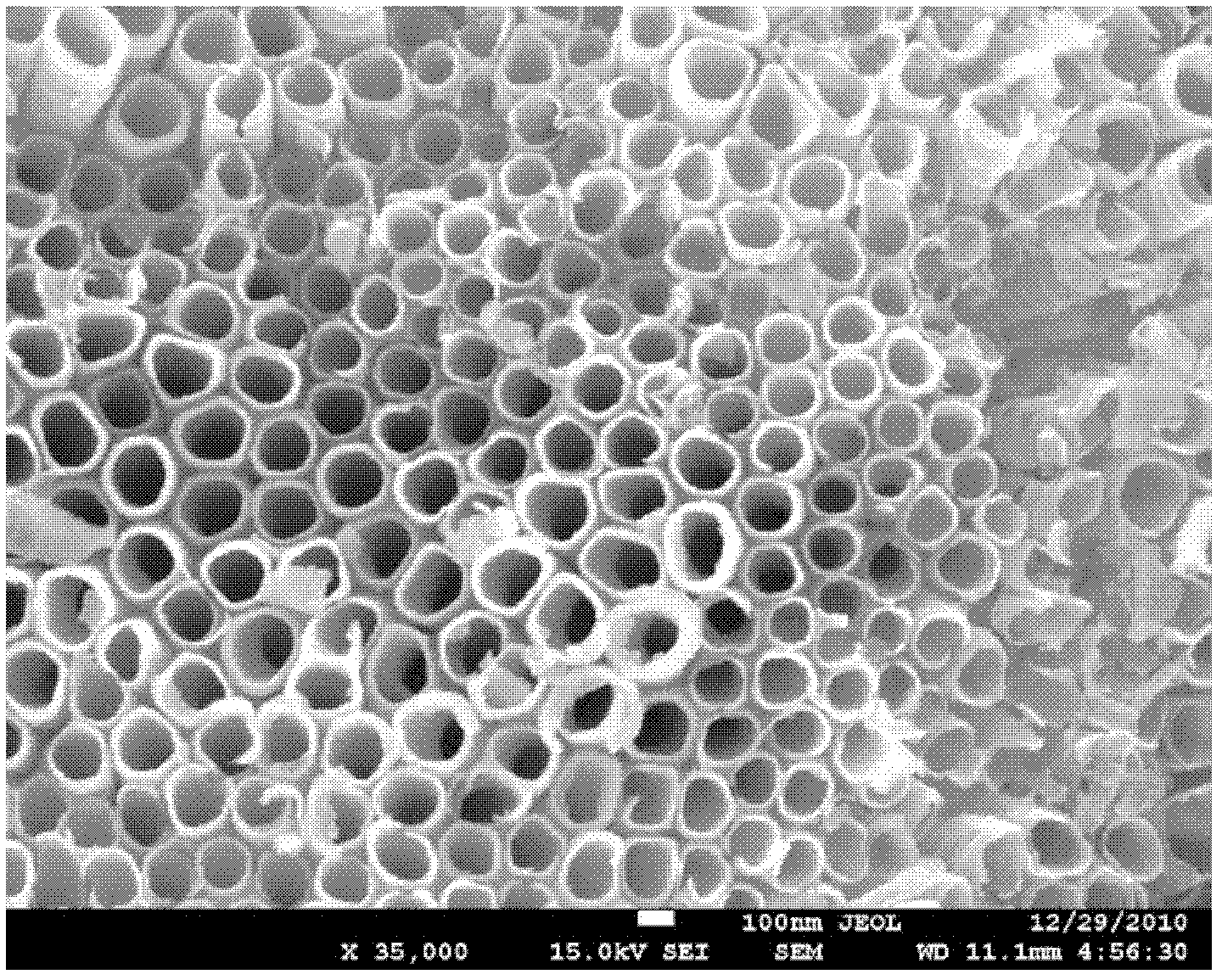Preparation method of wide-spectrum and strong-absorption surface-photovoltage type photodetector
A photodetector and photovoltaic technology, which is applied in semiconductor devices, final product manufacturing, sustainable manufacturing/processing, etc., can solve problems such as limited spectral range, complex structure, and limited application range, and achieve broad application prospects and low production costs. Low, wide spectral range effects
- Summary
- Abstract
- Description
- Claims
- Application Information
AI Technical Summary
Problems solved by technology
Method used
Image
Examples
specific Embodiment approach
[0029] A specific embodiment of the present invention is: a preparation method of a broad-spectrum, strong-absorbing surface photovoltaic photodetector, the specific method of which is:
[0030] a. TiO 2 Fabrication and Crystallization of Nanotube Arrays
[0031] With titanium foil as anode, platinum as cathode, 0.25wt% NH 4 The ethylene glycol solution of F is the electrolyte, and the titanium foil is anodized for 3 hours; the titanium foil is taken out, rinsed with deionized water, and ultrasonically treated for 5 minutes to obtain amorphous TiO on the titanium foil. 2 nanotube arrays;
[0032] Titanium foil and its amorphous TiO 2 The nanotube array was heated up to 450°C at a rate of 3°C / min, held for 3 hours and annealed for 3 hours, and finally cooled to room temperature with the furnace, that is, anatase TiO was formed on the titanium foil immersed in the electrolyte. 2 Nanotube array, no product attached to the part of the titanium foil that is not immersed in the ...
Embodiment 2
[0046] The specific approach in this example is
[0047] a. TiO 2 Fabrication and Crystallization of Nanotube Arrays
[0048] With titanium foil as anode, platinum as cathode, 0.25wt% NH 4 The ethylene glycol solution of F is the electrolyte, and the titanium foil is anodized for 6 hours; the titanium foil is taken out, rinsed with deionized water, and ultrasonically treated for 8 minutes to obtain amorphous TiO on the titanium foil. 2 nanotube arrays;
[0049] Titanium foil and its amorphous TiO 2 The nanotube array is heated up to 450°C at a rate of 20°C / min, held for 3.5 hours, and finally cooled to room temperature with the furnace, that is, anatase TiO is formed on the titanium foil immersed in the electrolyte. 2 Nanotube array, no product attached to the part of the titanium foil that is not immersed in the electrolyte;
[0050] b. Preparation of Bi by hydrothermal method 2 S 3 -TiO 2 nanotube array
[0051] Na 2 S 2 o 3 Added to 0.008mol / L Bi(NO 3 ) 3 The ...
Embodiment 3
[0058] The specific approach in this example is
[0059] a. TiO 2 Fabrication and Crystallization of Nanotube Arrays
[0060] With titanium foil as anode, platinum as cathode, 0.25wt% NH 4 The ethylene glycol solution of F is the electrolyte, and the titanium foil is anodized for 5 hours; the titanium foil is taken out, rinsed with deionized water, and ultrasonically treated for 6 minutes to obtain amorphous TiO on the titanium foil. 2 nanotube arrays;
[0061] Titanium foil and its amorphous TiO 2 The nanotube array was heated to 450°C at a rate of 10°C / min, held for 4 hours, and finally cooled to room temperature with the furnace, that is, anatase TiO was formed on the titanium foil immersed in the electrolyte. 2 Nanotube array, no product attached to the part of the titanium foil that is not immersed in the electrolyte;
[0062] b. Preparation of Bi by hydrothermal method 2 S 3 -TiO 2 nanotube array
[0063] Na 2 S 2 o 3 Added to 0.009mol / L Bi(NO 3 )3 The react...
PUM
| Property | Measurement | Unit |
|---|---|---|
| size | aaaaa | aaaaa |
Abstract
Description
Claims
Application Information
 Login to View More
Login to View More - R&D
- Intellectual Property
- Life Sciences
- Materials
- Tech Scout
- Unparalleled Data Quality
- Higher Quality Content
- 60% Fewer Hallucinations
Browse by: Latest US Patents, China's latest patents, Technical Efficacy Thesaurus, Application Domain, Technology Topic, Popular Technical Reports.
© 2025 PatSnap. All rights reserved.Legal|Privacy policy|Modern Slavery Act Transparency Statement|Sitemap|About US| Contact US: help@patsnap.com



